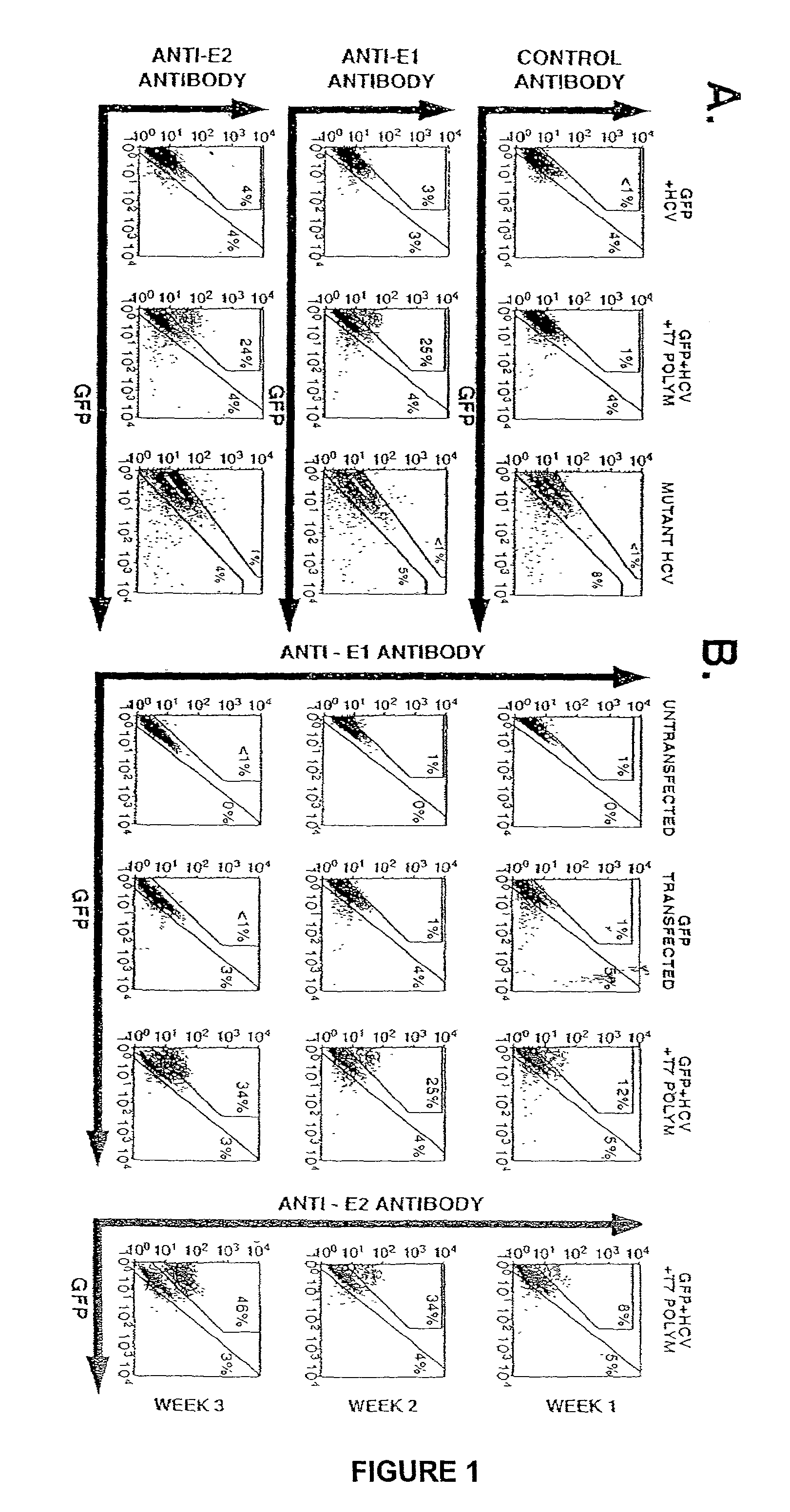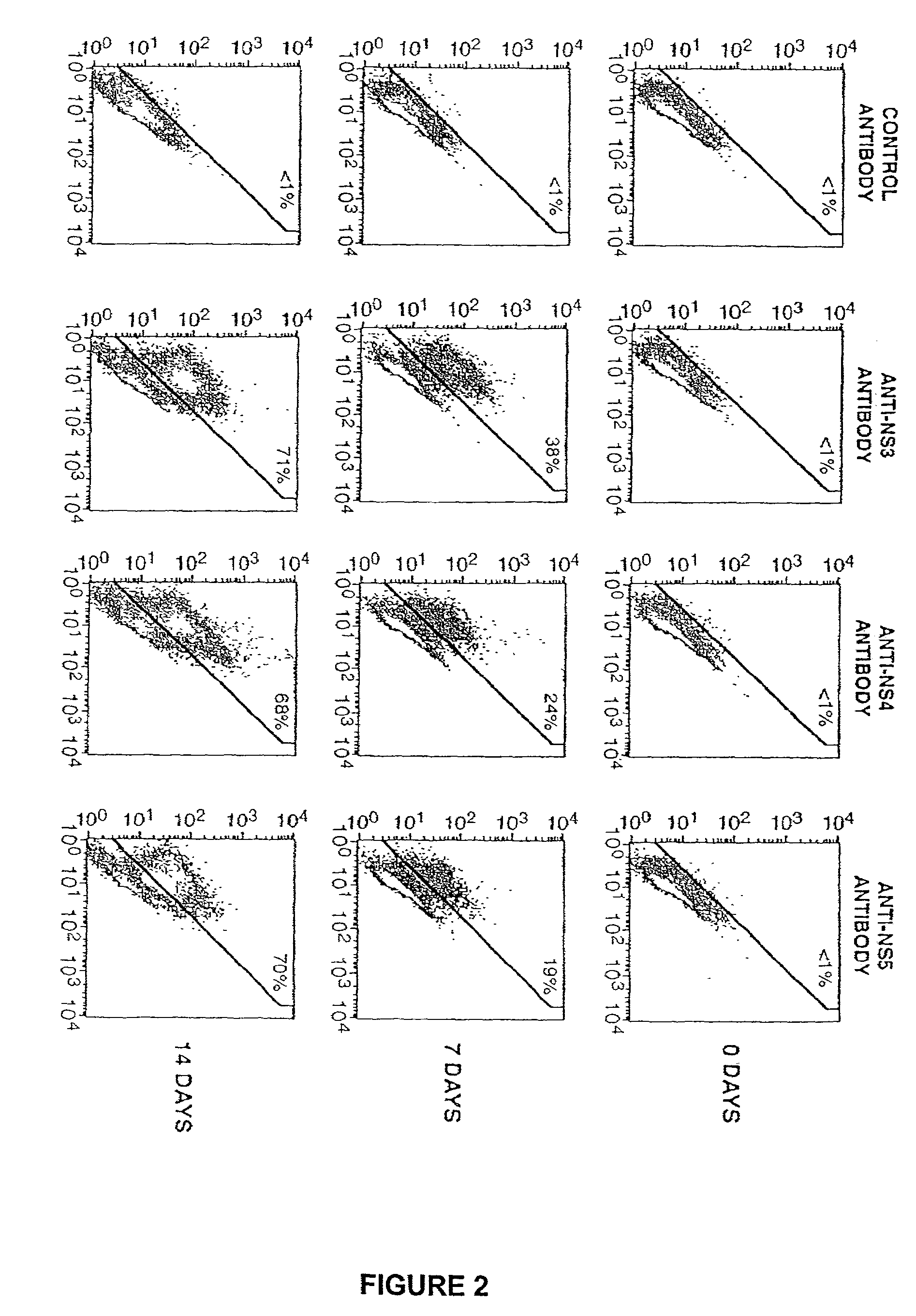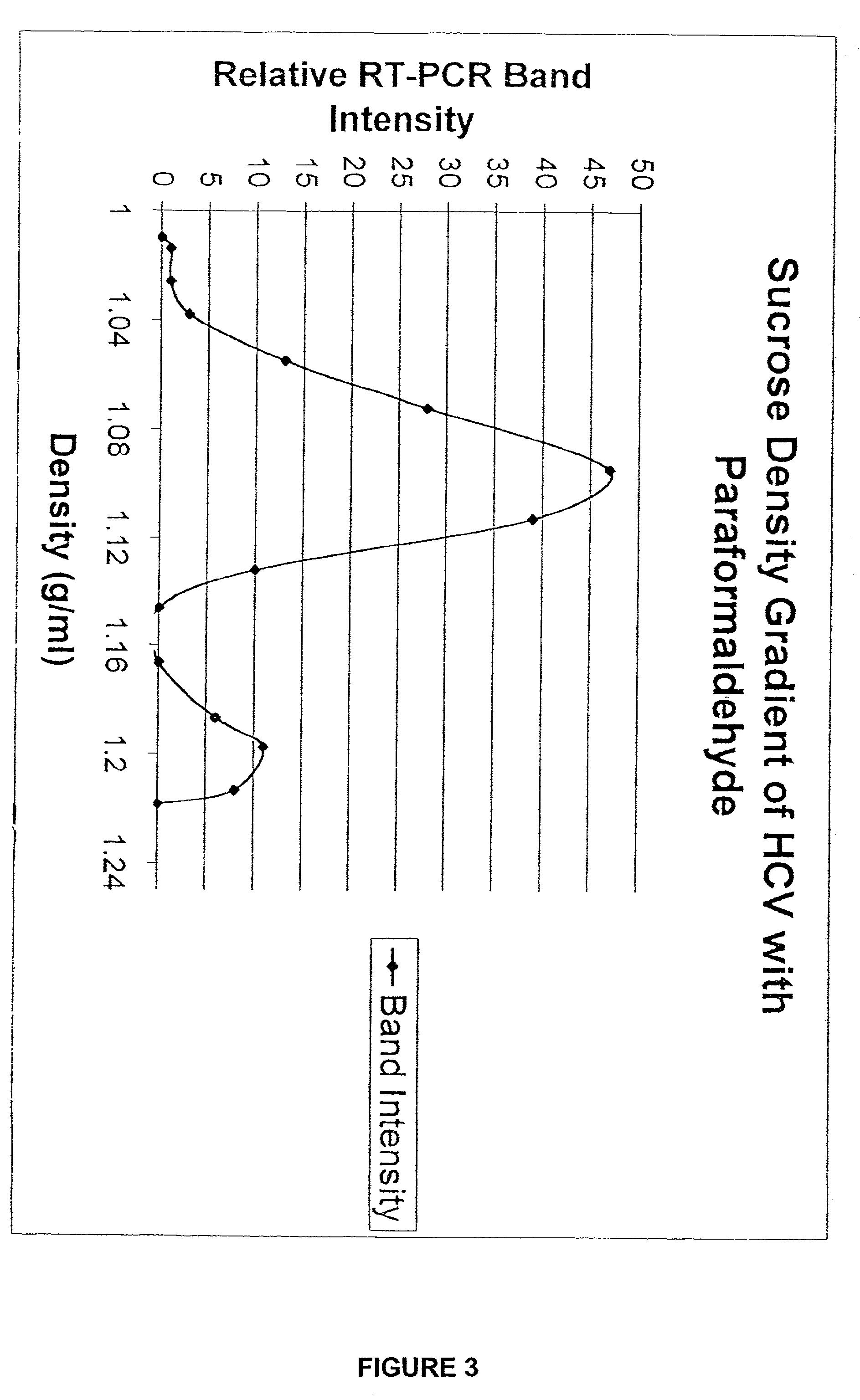Cell culture system for synthesis of infectious hepatitis C virus
a cell culture system and hepatitis c virus technology, applied in the field of virology, can solve the problems of difficult hcv virus study, hcv has been a difficult virus to study, and the genetic analysis of the viral genome is hampered
- Summary
- Abstract
- Description
- Claims
- Application Information
AI Technical Summary
Benefits of technology
Problems solved by technology
Method used
Image
Examples
example 1
Synthesis of Infectious Hepatitis C Virus In vitro in a Tissue Culture System
[0083]A reliable cDNA-based tissue culture assay for the synthesis of infectious hepatitis C virus (HCV) has been developed.
[0084]Transfection of cloned, wt HCV(1a) cDNA into human hepatocellular carcinoma (Huh-7) cells under specific conditions resulted in cell surface expression of viral glycoproteins E1 and E2. Both viral structural and non-structural NS5A and NS3) protein expression increased up to three weeks of transfection. Supernatants (media) isolated from the cell culture were infectious when mixed with fresh Huh-7 cells. The infectivity of the culture supernatants was resistant to treatments by DNase and a RNase. The virus titer increased significantly after four passages and cells infected with the passaged virus showed synthesis of both viral proteins and viral positive and negative strand RNA. No infectious virus could be recovered from Huh-7 cells transfected with a mutant HCV cDNA clone. Two...
example 2
Replication of Hepatitis C Virus in Huh-7 Cells
Cell Culture
[0085]Human hepatocellular carcinoma Huh-7 cells were cultured in 1640 RPMI containing 10% fetal bovine serum, penicillin, streptomycin, and L-glutamine.
[0086]The cDNA clone of hepatitis C virus (HCV), pCV-H77C, was kindly provided by Drs. Jens Bukh and Robert Purcell of NIH, Bethesda, Md. Transcription of HCV genome in this construct is directed by the bacteriophage T7 promoter. Plasmid DNAs, AR3126 and AR3132, containing the T7 RNA dependent RNA polymerase gene and eucaryotic transcription initiation and termination signals, were kindly provided Dr. F. William Studier, Brookhaven National Laboratory, Upton, N.Y. EGFP-N1 plasmid DNA encoding the renilla reniformis green fluorescence protein was purchased from Promega Biotec, Madison, Wis.
Transfection of Huh-7 Cells
[0087]Transfections were performed with appropriate plasmid DNAs using Superfect reagent from BIGCO.BRL Life Technologies. 10×106 cells contai...
example 3
[0092]To develop an HCV cDNA-based tissue culture system, an infectious HCV type 1a cDNA (pCV-H77C (M. Yanagi et al. Proc. Natl. Acad. Sci. USA 94, 8738 (1997).)) was co-transfected under the control of the T7 promoter with the T7 RNA polymerase gene under the SV-40 promoter (AR 3126 (B. M. Benton, W. K. Eng, J. J. Dunn, F. W. Studier, R. Sternglanz, P. A. Fisher. Molecular Cell Biol. 10, 353 (1990).). The latter construct lacked the nuclear localization signal.
[0093]Huh-7 cells (1×107) were transfected / co-transfected with plasmid DNA at 60–70% confluency in T-75 tissue culture flasks. In some experiments transfection was carried out in 6-well plates (3×106 cells per well and 2 μg of each plasmid). Ten μgs of each plasmid was added to 0.45 ml of serum-free RPMI and mixed with 180 μl of superfect transfection reagent from Quiagen. The mixture was incubated at room temperature for 10 min after which 3 ml of RPMI containing 10% fetal bovine serum was then added. The mixture...
PUM
| Property | Measurement | Unit |
|---|---|---|
| temperature | aaaaa | aaaaa |
| size | aaaaa | aaaaa |
| thick | aaaaa | aaaaa |
Abstract
Description
Claims
Application Information
 Login to View More
Login to View More - R&D
- Intellectual Property
- Life Sciences
- Materials
- Tech Scout
- Unparalleled Data Quality
- Higher Quality Content
- 60% Fewer Hallucinations
Browse by: Latest US Patents, China's latest patents, Technical Efficacy Thesaurus, Application Domain, Technology Topic, Popular Technical Reports.
© 2025 PatSnap. All rights reserved.Legal|Privacy policy|Modern Slavery Act Transparency Statement|Sitemap|About US| Contact US: help@patsnap.com



